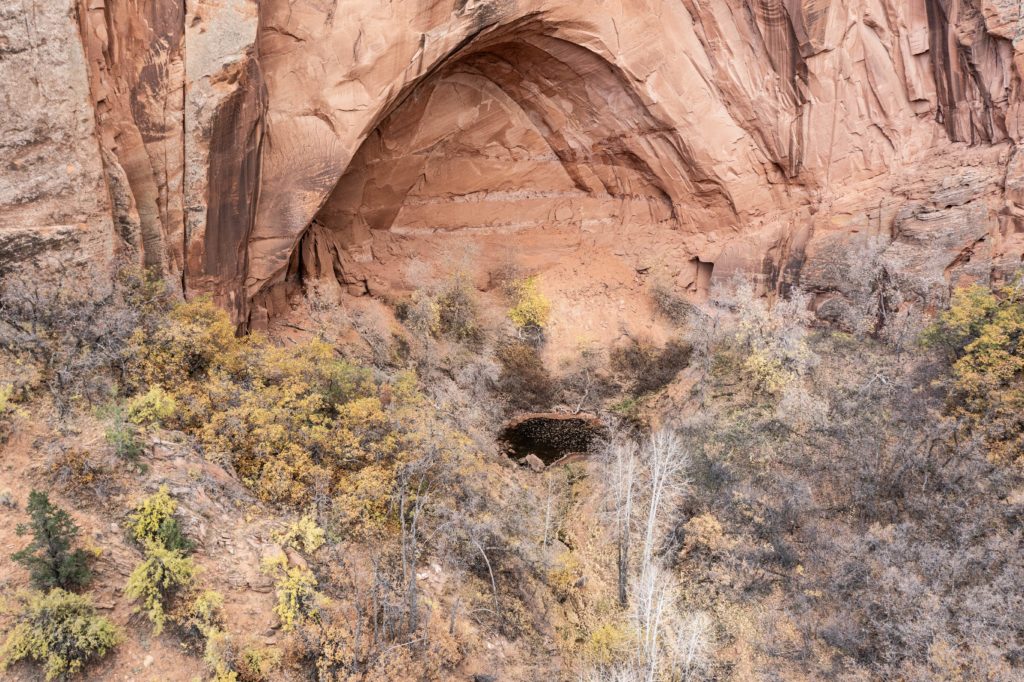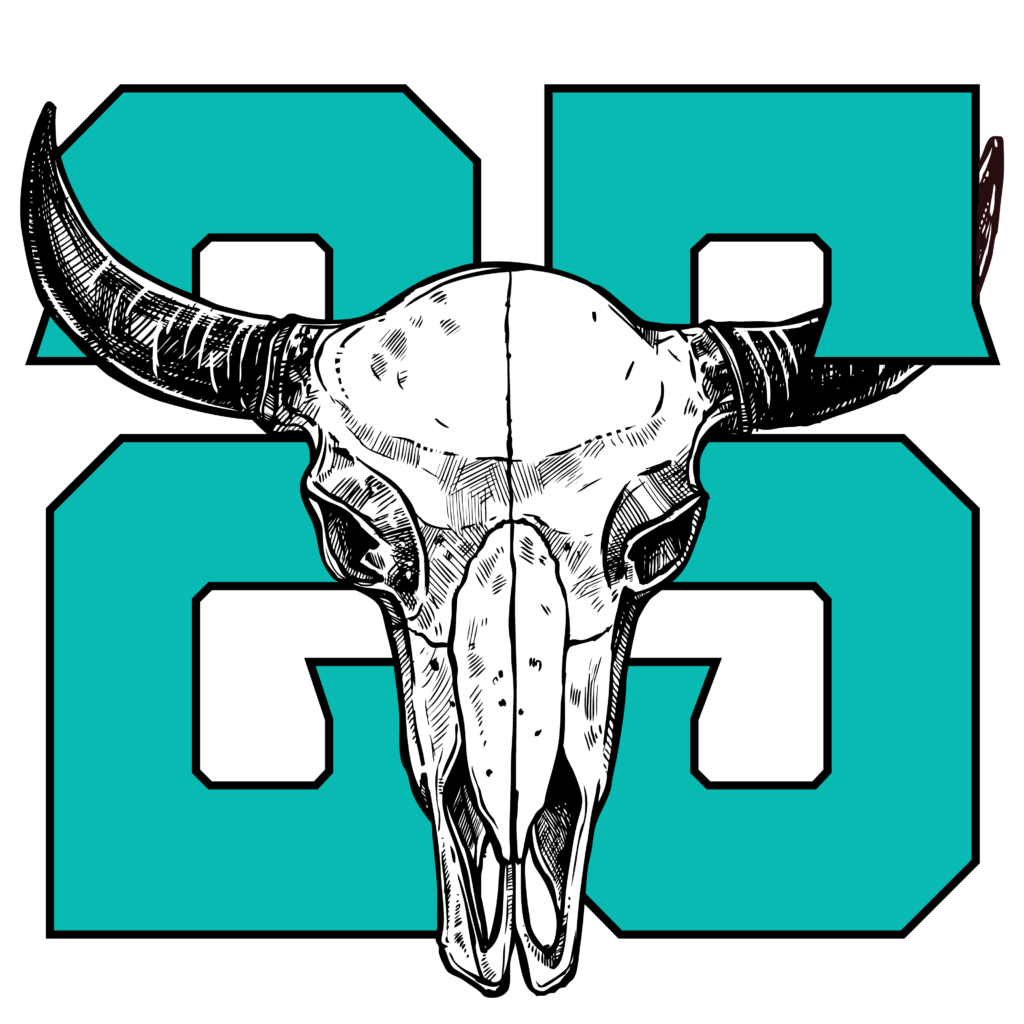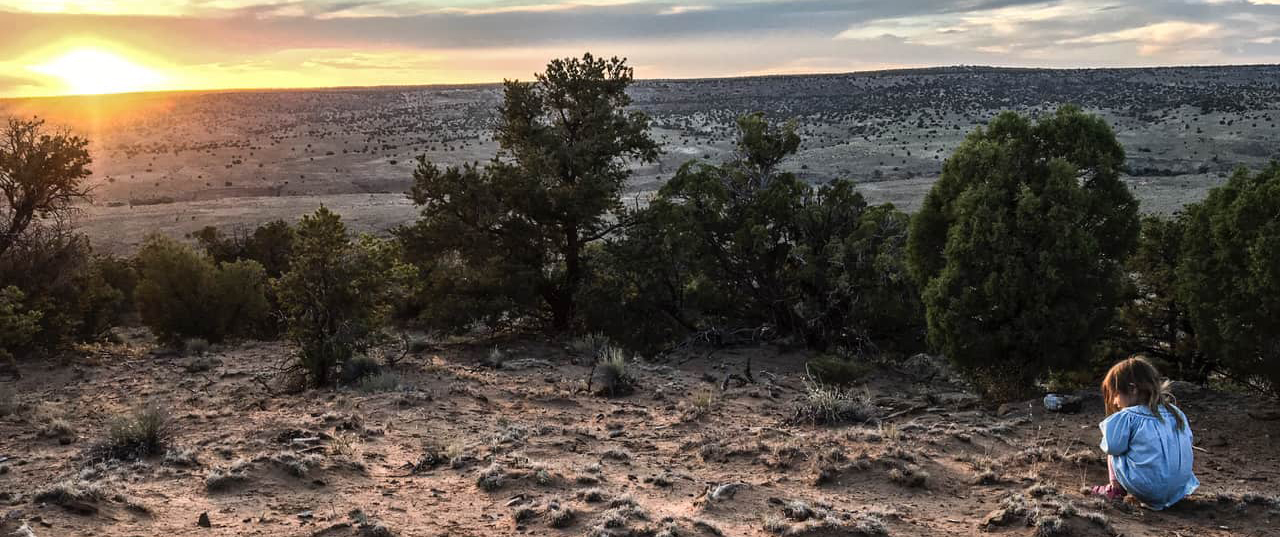16 Dec Thirty Years of Designing, Building, and Restoring Ecosystems
December 18th, 2024
Forward by Fred Phillips, Principal

(LEFT) Fred in 1997 // (RIGHT) Fred in 2024
Still Standing,
Thirty years ago, I drove my first truck (a red 1980 Ford Ranger without AC) to the Colorado River Indian Tribes (CRIT) in Parker, Arizona, from Valparaiso, Indiana. I had backpacking gear, a mountain bike, a mess of grateful dead bootlegs and little cash. Excited, I arrived in Parker that June when the temperature soared to 128 degrees, a record.
There, I met Chairman Dennis Patch, a CRIT tribal council member at the time. Over the next five years, CRIT entrusted me with helping create a park and wildlife preserve on the Colorado River. I realized I couldn’t achieve it alone; we needed a family of elders, teachers, farmers, children, tribal leaders, government agencies, colleagues, students and more. Together, we made it happen, big time.
We restored the backwaters, created hiking trails, forests, a park, provided education, recreation, wildlife protection, and ceremony and community. It was an amazing experience at 23 years old, healing the land together. It taught me valuable life lessons about family, friendship, teamwork, making big things happen, not giving up, or letting perfect get in the way of good. It led me to an amazing journey through life. It’s been a hell of a ride and a lot of fun. At 54, now I’m doing the same work I did at CRIT higher up in the watershed with my son Owen, daughter Faye, newfoundland Maggie and our community. I’m so grateful for this, the FPC family team, and all the wonderful people I’ve had the privilege of working and becoming friends with over the last three decades. Here’s to all the amazing work we have done and all that we will do.
Holiday Blessings,
Fred

Remembering & Honoring Our Friend, Lena

I’ve had the privilege of working with incredible individuals over the years, and many friendships I’ve formed during my career have blossomed into true family. Witnessing a restoration vision come to life is an incredibly inspiring experience. Lena Clitso, a native of Tsegi Canyon, was a visionary leader and community organizer throughout her life. Her ideas, thoughtfulness, courage, and unwavering spirit played a pivotal role in the restoration work we conducted in Tsegi Canyon.
I learned so much from my friend Lena. I’ll always cherish the memories of sitting around a fire with her in Tsegi Canyon. Her stories about her family, her deep connection to Mother Earth, animals, and each other, and her pursuit of living a beautiful life were truly remarkable gifts. Lena’s radiant spirit, unwavering hard work, genuine friendship, and love infused Tsegi and our restoration family with hope. I’ll never forget the feast that her husband, Ed, and she prepared for us after a ceremony in Tsegi. Lena’s dedication was unwavering; she worked tirelessly, never wasting anything, and always sought ways to improve things. Above all, she was a friend and colleague who illuminated our team with her light.
Lena’s passing last summer was devastating for all of us. As our convoy was leaving our fall work expedition in Tsegi, I caught a glimpse of Lena in her side-by-side, ready to embark on the journey. I couldn’t help but feel a sense of awe and gratitude for having the privilege of being friends with such an extraordinary woman. I stepped out of my truck to give her a heartfelt hug and express my gratitude. As we bid farewell, she shared that restoring Tsegi Canyon had always been a dream of hers, and she expressed her profound gratitude that we were making it a reality. We will continue to honor the memory and spirit of Lena Clitso, the visionary who breathed new life into Tsegi Canyon, and carry on the wisdom and teachings she so graciously shared with us.
Restoration Grows in Tsegi
by Emily Ontiveros, Restoration Program Manager

Sumac Canyon Crew
Sumac Canyon is the kind of place that gives us a glimpse of what riparian canyons of the Southwest looked like before colonization and grazing changed the landscape. In the upper reaches of the canyon, springs support lush pockets of willow, dogwood, and cottonwood. Wide swathes of grasses cover the bottom of the canyon with little to no incision visible in the upper portions. Some Russian olive needs to be managed but apart from that, it is easy to imagine this is how the canyon was 100 years ago.
A major headcut about halfway up Sumac provides stark evidence of how the unzipping and erosion of a channel can reduce biodiversity and vegetation. In the lower half of the canyon, the channel has incised to bedrock and the sparse plant life includes mostly Russian olive and a few junipers.
With the support of Martha Austin, who holds the grazing permit for Sumac, FPC has begun the restoration process. In August 2023, nearly 1,500 linear feet of wildlife-friendly deferment fencing was built at the mouth of the canyon to prevent feral livestock from impacting the riparian habitat. The fence crew consisted of Mike James (FPC foreman), Preston Wilson, Regis Maloney, and permit-holders Ed and Lena Clitso. Building the fence was the first step in protecting the canyon.

(LEFT) Beaver Dam Analog – August 2024 // (RIGHT) Beaver Dam Analog – November 2024
FPC returned in October 2023 for revegetation in Upper Sumac. The original fence crew was joined by Nick Chischilly, Gabryl Sam, Emily Ontiveros (FPC), and Jennifer Kaplan (Partners for Fish & Wildlife). The crew harvested willow and cottonwood poles from existing healthy stands, and additional plants were provided by TerraBirds and Let it Grow Native Plants, both in Flagstaff, AZ.
Over four days, the crew planted approximately 450 willow and cottonwood clusters, totaling about 1,350 willow and cottonwood poles. An additional 172 starts of flowering and grass species were planted.
In late August 2024, the crew returned to focus on erosion control and channel stabilization. During this work hitch, we thought of and remembered our dear friend Lena Clitso. It felt like we were carrying on her memory and legacy by working alongside her family to continue to heal the land.
Fourteen beaver dam analogues, 23 one rock dams, and 3 brush revetments were constructed. About 4,000 native starts were planted. After 5 days of work, there was evidence that the water was already slowing down and spreading out, which will support better habitat.
FPC will be returning to Sumac Canyon in 2025 to complete erosion control on the large headcut. We are excited to wrap up the work in this fourth canyon where restoration efforts have been undertaken, meaning over 4000 acres have now been protected in the Tsegi canyon system. Our deepest gratitude to all who have supported this project, particularly the grazing permit-holders in Tsegi that have made this possible.

Willow pole harvesting

Pole plantings in Upper Sumac

The crew joined by local permit holders

One of the lush springs in Sumac Canyon

Restoration Projects Receive $9 Million in Funding
by Emily Ontiveros, Restoration Program Manager & Benjamin Wilkinson, Creative Consultant
In late 2023, several of the restoration projects that FPC has completed conceptual designs for were awarded funds for implementation. We are very excited to see these projects come to fruition and are grateful to work with such great clients and partners. Read on for details on these projects.
Uncompahgre Multi-Benefit Project
The Uncompahgre Multi-benefit Project is aimed at providing riparian restoration while supporting irrigation infrastructure and efficiency. The Ward Water Group, which includes Fred and several of his neighbors, have worked with the surrounding landowners, Natural Channel Design, and American Rivers to develop a conceptual design for the upper floodplain, the riparian corridor, and the Ward Ditch headgate.
The Bureau of Reclamation’s WaterSMART fund will be providing $1.2 million, along with funding from the Colorado Water Conservation Board and Colorado River District, to support final design and construction.
The final design and permitting is wrapping up, meaning that we hope to have a contractor breaking ground on this project in early 2025.

Part of the Riparian and Upper Floodplain Restoration Areas
Uncompahgre Multi-benefit Project

Cocopah North Restoration Project
The Cocopah North Restoration Project is a 40 acre site along the banks of the Colorado River just west of Yuma, AZ. This is where the City of Yuma releases its treated effluent into the Colorado River, but opportunity abounds to reroute that wastewater across the Cocopah site to create a series of pools and wetlands. With this design, water quality and habitat will be improved.The Cocopah Indian Tribe is undertaking multiple projects to support restoration and cultural connection along the lower Colorado River. FPC has been able to develop the conceptual designs for these projects, with help from Oxbow Ecological Engineering. With project support from the Audubon Society, the Cocopah Tribe has received $5 million in funding from the National Fish and Wildlife Foundation for final design and construction of two projects. Both projects are now in the final design and permitting phase. We hope to see construction start sometime in 2025.
Cocopah West Restoration Project
Below Morelos Dam, the Colorado River is known for little to no flows and degrading groundwater conditions. This is where the Cocopah West Restoration Project will restore 390 acres of cottonwood/willow, mesquite, and upland habitat to support threatened species and increase cultural connection to the river. The Cocopah Tribe is working with Yuma County Water Users Association and the Bureau of Reclamation on infrastructure to bring irrigation water to the site.


Pongsikya Canyon Restoration Project
Pongsikya Canyon, a historically significant and sacred area for the Hopi people, has long been an essential site for fishing, conservation, and cultural resources. However, years of neglect, environmental damage, and unauthorized use have degraded the area. Restoration efforts led by First Mesa Consolidated Villages leaders, Fred Phillips Consulting, Natural Channel Design, and partnerships including The Catena Foundation, Biophilia Foundation Northern Arizona University, U.S. Fish & Wildlife are rejuvenating the area. Phase one achievements include planting 3,000 native plants, constructing erosion control structures, and creating trails to protect and enhance the ecosystem. Plans to restore springs, manage invasive species, and establish a wilderness area for cultural education and ceremonies are underway, with community engagement sought for future development.

Pongsikya Canyon Crew
Fred Joins American Rivers’ SW River Council
Fred Phillips was recently asked to sit on American Rivers’ Southwest River Council. American Rivers is a nonprofit organization focused on protecting and restoring rivers for ecological and community benefit. American Rivers works to protect a multitude of rivers in the Southwest, including the Colorado River, which FPC has been working on since its founding 25 years ago.
Recently, American Rivers supported FPC’s Uncompahgre Multi-benefit Project by providing project management support and leading the grant-writing process that has resulted in a $1.6 million grant from Bureau of Reclamation’s WaterSMART fund for final design and implementation. American Rivers’ role in the project was critical in taking it from concept to fully funded. This type of support is an important missing piece in many restoration efforts, and FPC is grateful for the work that American Rivers is doing.
As part of the Southwest River Council, Fred will be working with other experts and advocates across the region to support efforts to protect rivers.

Welcoming New Team Members, Andrew Boyd & Ben Wilkinson

Our team is growing in a few areas and we’re thrilled to announce the hiring of Restoration Designer, Andrew Boyd. Andrew will engage in technical design drafting and project coordination. While on board, Andrew has contributed to documentation on a range of scales and ecological contexts through geospatial analysis, earthwork, planting design, and permitting. Andrew completed his Master of Landscape Architecture at Harvard Graduate School of Design, and is currently taking coursework in Environmental Planning at Yale University. Andrew has a decade of project experience focused on strategies for water allocation to increase the resilience of agrarian communities alongside as riparian and terrestrial habitat.
Additionally, we’ve expanded our organization to include Creative Director Consultant, Ben Wilkinson. Ben has assisted FPC throughout the years with brand-focused design projects and recently joined the Pongsikya Canyon Restoration work crew on the ground, while also assisting with photo monitoring and preparing multimedia materials for the councils we serve. A former landscape construction foreman, Ben holds a Master’s Degree in Visual Design from the Rochester Institute of Technology. Outside of his design roles, Ben is also a songwriter, recording artist/producer, and active multi-instrumentalist. He lives in the Tucson Mountains with his wife, Lauri, and their two pups.

On the Horizon
2025 will hold more good work and more healing of the land for FPC. Along with continuing projects in familiar places like Yuma, Navajo Nation, and Hopi; FPC is working on new projects on the White River in Colorado and the Jordan River in Utah. We hope to return to some sites to expand previous restoration, such as at Bishop Farms along the Rio Grande in West Texas.
There is more need than ever to bring people together over good restoration work, and we are grateful to be carrying on that mission.
Thank you for catching up with us and we wish you a very happy year ahead.
The Team at FPC



Sorry, the comment form is closed at this time.